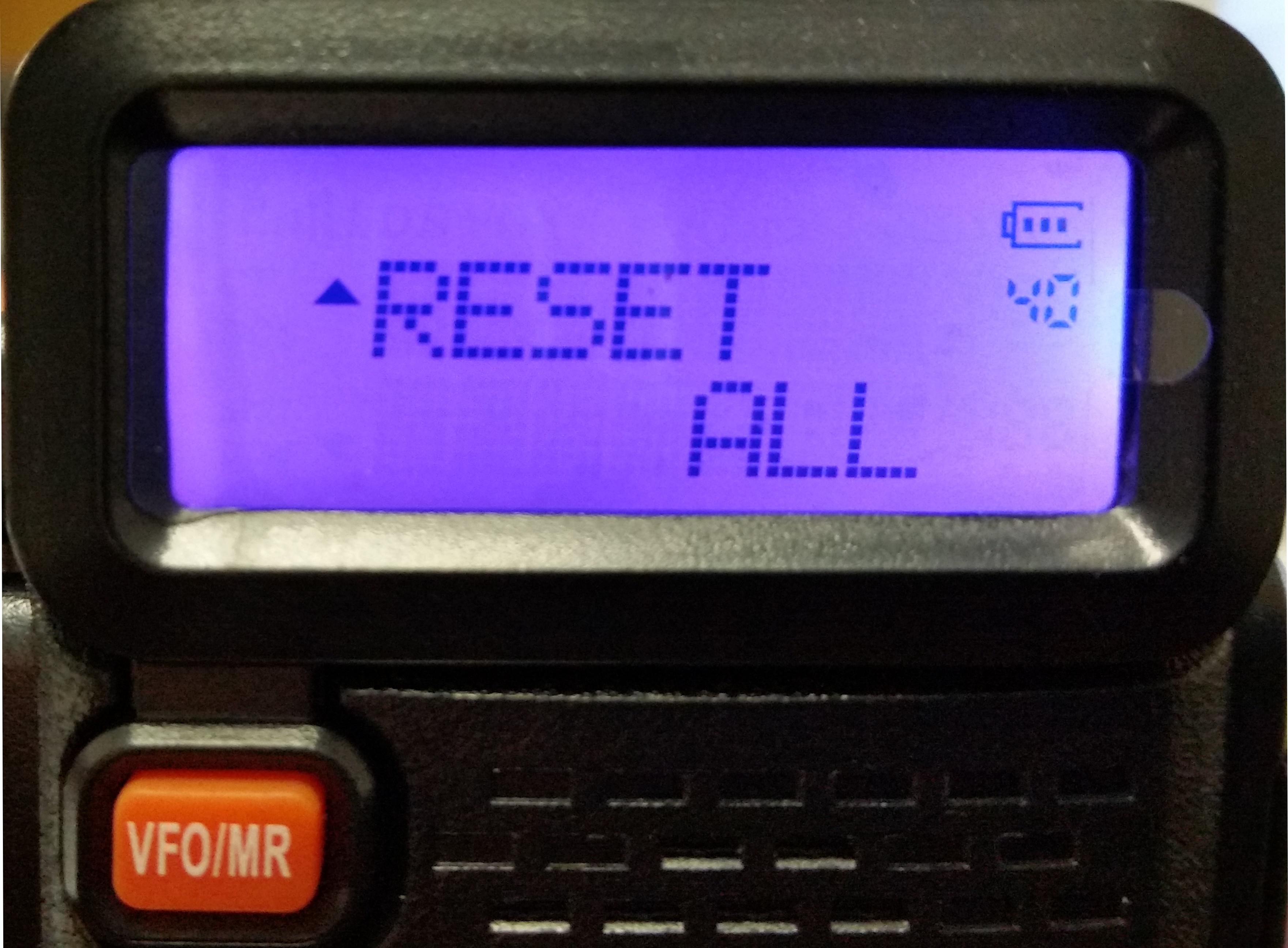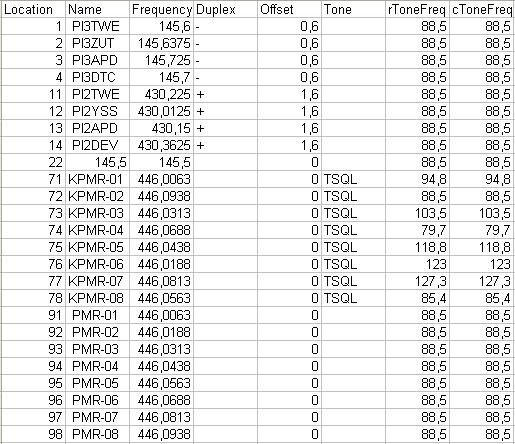

- #UV5R CHIRP PROGRAMMING NOT TRANSMITTING CORRECT PL PDF#
- #UV5R CHIRP PROGRAMMING NOT TRANSMITTING CORRECT PL SERIAL#
- #UV5R CHIRP PROGRAMMING NOT TRANSMITTING CORRECT PL MANUAL#
- #UV5R CHIRP PROGRAMMING NOT TRANSMITTING CORRECT PL SOFTWARE#
- #UV5R CHIRP PROGRAMMING NOT TRANSMITTING CORRECT PL CODE#
#UV5R CHIRP PROGRAMMING NOT TRANSMITTING CORRECT PL SOFTWARE#
In fact some of the functionality can only be achieved using software (such as channel names and channel skip) so its a vital purchase whatever version you decide to use. Notably, copy/paste/insert/delete capability, more in depth settings control and 7 character alphanumeric channel naming as opposed 6. I also downloaded a copy of CHIRP and having compared the two, decided to use CHIRP as it offers significantly more than VIP does.
#UV5R CHIRP PROGRAMMING NOT TRANSMITTING CORRECT PL SERIAL#
The only thing that makes remembering menu items difficult to start with are some weirdly abbreviations like “ABR” which is backlight illumination time and “TDR” which is dual watch, but it all becomes second nature after a while.Īs mentioned in Part 1, I ordered the official BaoFeng VIP software and USB cable, which is essentially a serial com port device with USB functionality (via an inbuilt chip), as most computers don’t have older style RS232 serial ports anymore. For example, press “MENU” then “0”/”SQL” to activate squelch control, press “MENU” again so the upper arrow symbol switches to the lower display (down arrow) and adjust the range (0-9) using the up/down buttons adjacent to the MENU button. There are 41 menu items (numbered 0-40) and secondary labelling on the keypad enables some of the more common functions to be adjusted without remembering all 41 items.

The BaoFeng UV-5 is a menu driven system – this is the place to enter operating parameters. Up/down buttons are used for VFO tuning as opposed the rotary knob which is dedicated to on/off/volume control.

A/B is for switching between the upper and lower VFO readouts VHF top, UHF bottom – though this can be changed to display VHF/VHF or UHF/UHF. Anyone familiar with radios will appreciate that VFO is for tuning frequencies – these are entered manually via the numeric keyboard and MR pre-programmed channels ready for scanning or operating on (TX). The most commonly used being VFO/MR and A/B. Only a couple of button presses are required to start using the radio.
#UV5R CHIRP PROGRAMMING NOT TRANSMITTING CORRECT PL MANUAL#
In fact, I didn’t even look at the manual to start with as just playing around, switching between channel mode and frequency mode, entering frequencies in VFO (Variable Frequency Oscillator) enabled me to get to grips with the basics fairly quickly.

Sure, its not overly intuitive and actual programming instructions are not included (oddly enough!), but things click into place after a while.
#UV5R CHIRP PROGRAMMING NOT TRANSMITTING CORRECT PL PDF#
I had read that the user manual was not well translated (see PDF manual download at bottom of review) and programming the radio without the USB cable/software was a pain and I agree with the latter – it is a bit long winded – though the user manual was not as bad as expected. The BAND button switches between upper and lower VFO’s in frequency mode. The numeric keypad is illuminated and button presses are solid and reliable. The bright LED flashlight can also be operated in strobe mode as well as for signalling another transceiver in alarm mode The MONI button opens up the squelch if set higher than “0” (long press) and a short press activates the LED flashlight, a quick secondary press/release and the unit enters LED strobe mode. PTT is self explanatory and end of transmissions can be assigned a Roger Beep (MENU 39).
#UV5R CHIRP PROGRAMMING NOT TRANSMITTING CORRECT PL CODE#
The Call button has two modes, one push facilitates the FM radio on/off and a longer press activates Alarm mode (flashing LED and audible siren alarm, which can activate Dual Tone Multi Frequency or alarm signalling on another transceiver via MENU 32 (select from options: Site, Code or Tone). Note the case and button revisions on the UV-5R (left) and UV-5R+ Plus (right) On the right side is the combined SP (speaker) MIC (microphone) socket – accessed via an attached flexible plastic cover. Same side and from the top is the Call button, PTT (Push To Talk) and MONI (monitor) button. The mic aperture is positioned to the left of the speaker (viewed from the front) and just below the RX/TX LED and orange VFO/MR button. The tri-colour LED backlit dual frequency display sits above a small speaker that provides good clean audio. The plastic moulding is good and belies the price tag.īefore we proceed to operating/programming, a quick tour of the unit is in order. And it is little: 55mm (wide) x 150mm (L) x 27mm (D) approx (measured at widest/longest parts and with no antenna). The BaoFeng UV-5 is a neatly engineered little radio. Buy a Baofeng UV-5R from Sain Store on BaoFeng UV-5R (left) and UV-5R+ Plus (right)


 0 kommentar(er)
0 kommentar(er)
